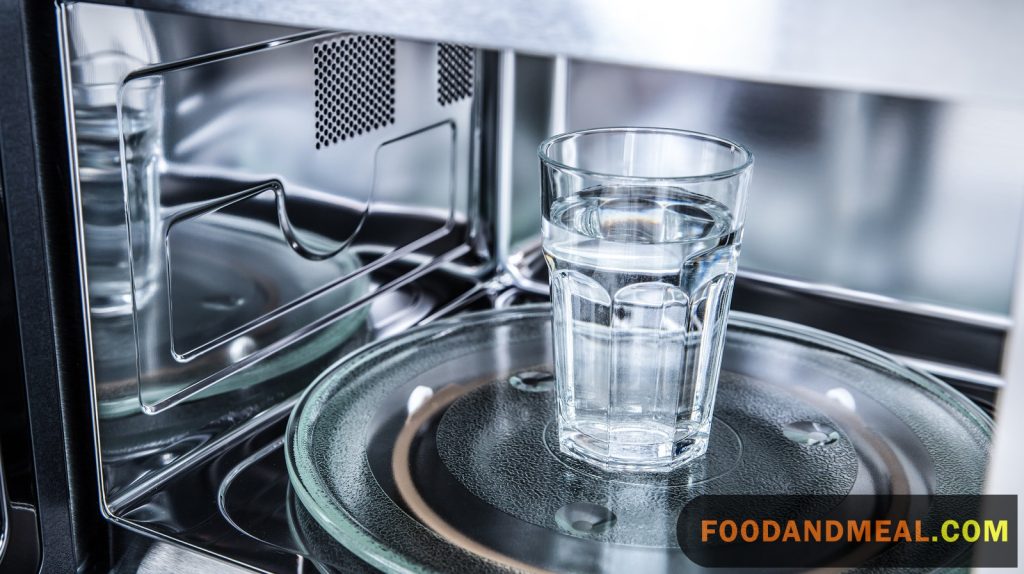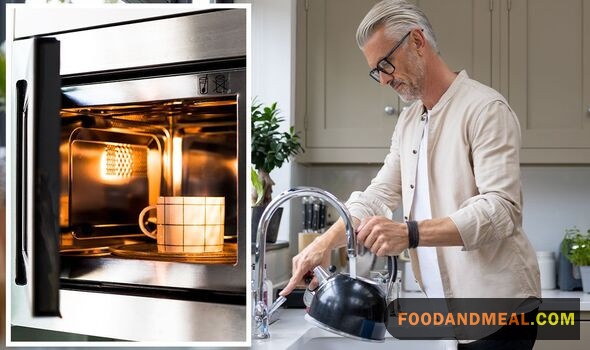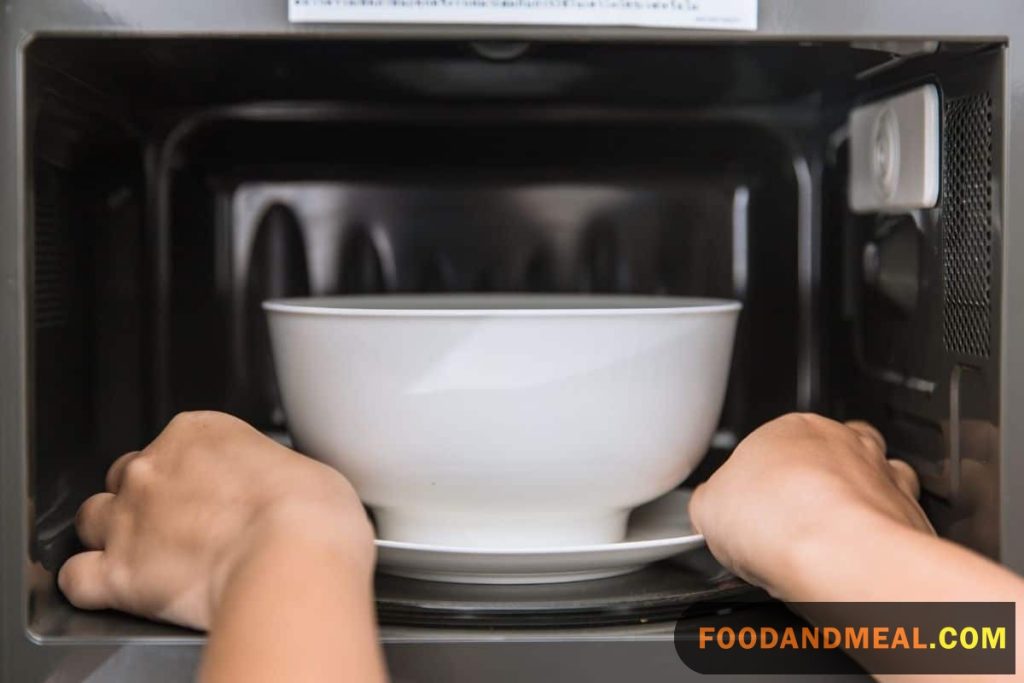Diving into the world of modern kitchen conveniences, one might wonder about the science and safety of using microwaves for everyday tasks.
Among the most debated topics is the boiling of water using these handy appliances. “Is microwave boiling water?” is a question that Dinnerdude seeks to address, exploring both the mechanics and precautions behind this common practice.
Is microwave boiling water?

We’ve explored the nuances of boiling water using a microwave oven. Microwaves, as many might be aware, produce heat through the manipulation of high-speed electromagnetic waves, creating friction amongst water molecules.
Through our comprehensive studies on the effect of varying heat settings in a microwave on water properties, we can affirm that microwaves are capable of bringing water to boiling temperatures.
However, a noteworthy point is that these electromagnetic waves heat water molecules sporadically. This sometimes results in a scenario where water might boil at the base while remaining lukewarm on the top.
Therefore, based on our experience, we always emphasize stirring the water post-heating and advocate the use of appropriate microwave-safe containers.
While the health implications of microwave ovens are subjects of continuous debate, We advise certain precautions.
Recommendations when using a microwave oven to boil water
Although microwaving is a speedy method to boil water, it’s paramount to heed certain precautions to mitigate mishaps.
The peril of scalding oneself with boiling water is real. At Dinnerdude, we always recommend using protective mitts when retrieving the water to prevent burns. Always ensure the containers you use are designated as microwave-safe.
Refrain from using non-microwave-safe materials like certain plastics, glasses, or any metal containers in the microwave. The steam produced can burn, hence it’s advisable to allow the boiled water to cool slightly before direct contact.
Thoroughly perusing your microwave’s user manual provides insights into the appropriate power levels, settings, and tools to use.
How to use it safely

It is simple and quick to bring water to a boil in the microwave. Here are six simple steps that consumers can take:
Choose a cup that can be used in the microwave. Bowls made of glass or ceramic are the best option. Fill a cup or bowl halfway with water but don’t cover or cover it. Fill the cup with a non-metallic object. Maybe a chopstick or a popsicle stick to keep the water from getting too heated.
Allow the microwave oven to rotate for brief periods of time. Stir every 1 to 2 minutes until the water comes to a boil. Impact on the bowl’s side to check the heat and help release heat at the bottom of the cup, allowing the cup of water to heat and boil evenly.
Using the heat-insulating pad, carefully remove the cup from the microwave. Boiled water from a microwave oven can be used for a variety of applications, including cooking and making tea, cocoa, or coffee.
Precautions boil water in the microwave
When we boil water in the microwave, the following precautions should be taken:
| Beware of Superheating | In the microwave, water can get heated beyond its boiling point without actually boiling. When such superheated water is finally disturbed (by adding a tea bag, for instance), it can erupt violently and cause scalding. |
| Use a Microwave-Safe Container | Ensure the container you use is designated as microwave-safe to prevent melting or other potential hazards. |
| Avoid Overfilling | Leave some space at the top of the container. This will reduce the risk of the water spilling over when it starts to boil. |
| Place a Non-Metallic Object | Inserting a wooden stick or a sugar stick into the water can provide nucleation sites, helping the water boil more regularly and reducing the risk of superheating. |
| Monitor the Heating | It’s advisable not to leave the microwave unattended. Stay close by and keep an eye on the water. |
| Let it Stand | After boiling, allow the water to stand for a minute inside the microwave before removing it. This reduces the risk of burns from superheated water. |
| Handle with Care | Always use oven mitts or a cloth to remove the container from the microwave. The container can be hotter than you anticipate. |
| Microwave Setting | If your microwave has adjustable power settings, consider using medium power to heat the water more uniformly. |
Remember, while microwaving can be a quick way to heat water, it’s essential to be cautious to avoid burns or other injuries.

In our journey to understand the nuances of microwave cooking, it’s evident that while this method offers convenience, it’s essential to proceed with caution.
As Dinnerdude has delved into the topic, we’ve highlighted the importance of safety precautions to ensure optimal results. The next time you reach for that microwave to boil water, remember these insights and ensure your culinary endeavors are both efficient and safe.